Hall Current 13 Click
R465.00 ex. VAT
Hall Current 13 Click is a compact add-on board that provides economical and precise AC or DC current sensing solutions. This board features the TMCS1107-Q1, a galvanically isolated Hall-effect current sensor capable of DC or AC current measurement with high accuracy, excellent linearity, and temperature stability from Texas Instruments. It enables the lowest drift, <3% full-scale error, and highest accuracy over time and temperature. It also provides a reliable 420V lifetime working voltage and 3kVRMS isolation between the current path and circuitry with uni/bidirectional current sensing. Besides, the user is allowed to process the output signal in analog or digital form. This Click board™ is suitable for AC or DC current-sensing in industrial and commercial systems, motor and load control, power factor correction, overcurrent protection, and many more.
Hall Current 13 Click is supported by a mikroSDK compliant library, which includes functions that simplify software development. This Click board™ comes as a fully tested product, ready to be used on a system equipped with the mikroBUS™ socket.
Stock: Lead-time applicable.
| 5+ | R441.75 |
| 10+ | R418.50 |
| 15+ | R395.25 |
| 20+ | R380.37 |

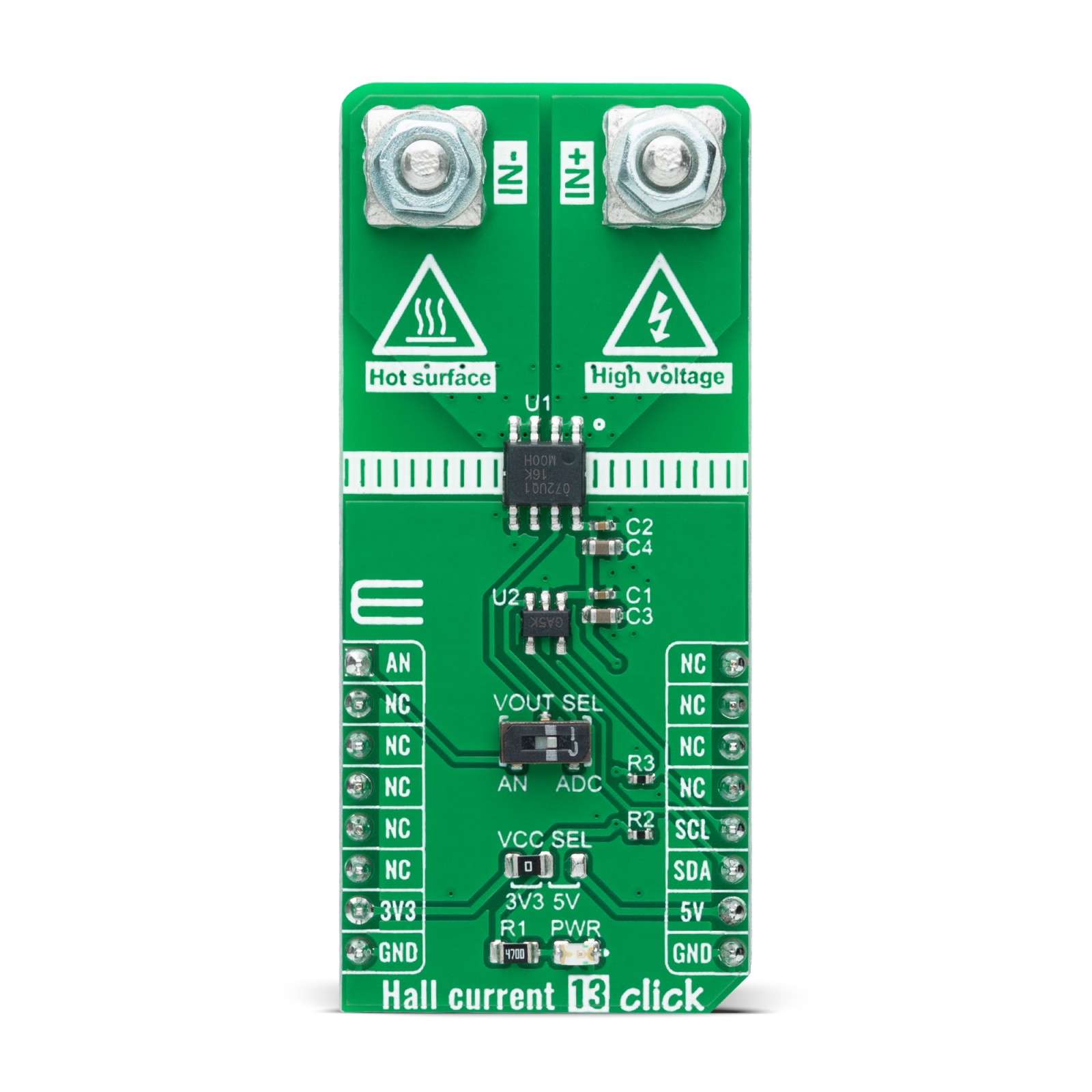
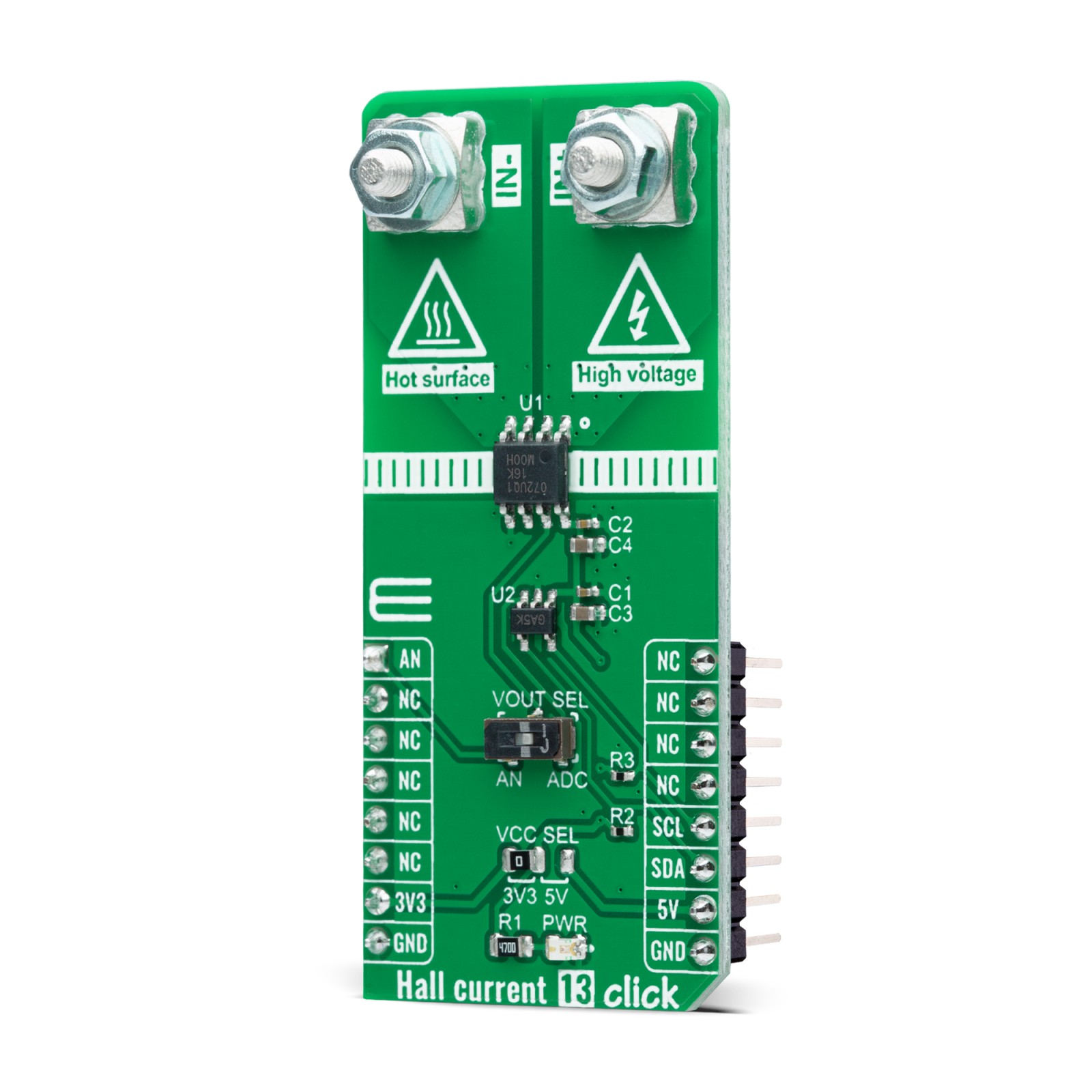
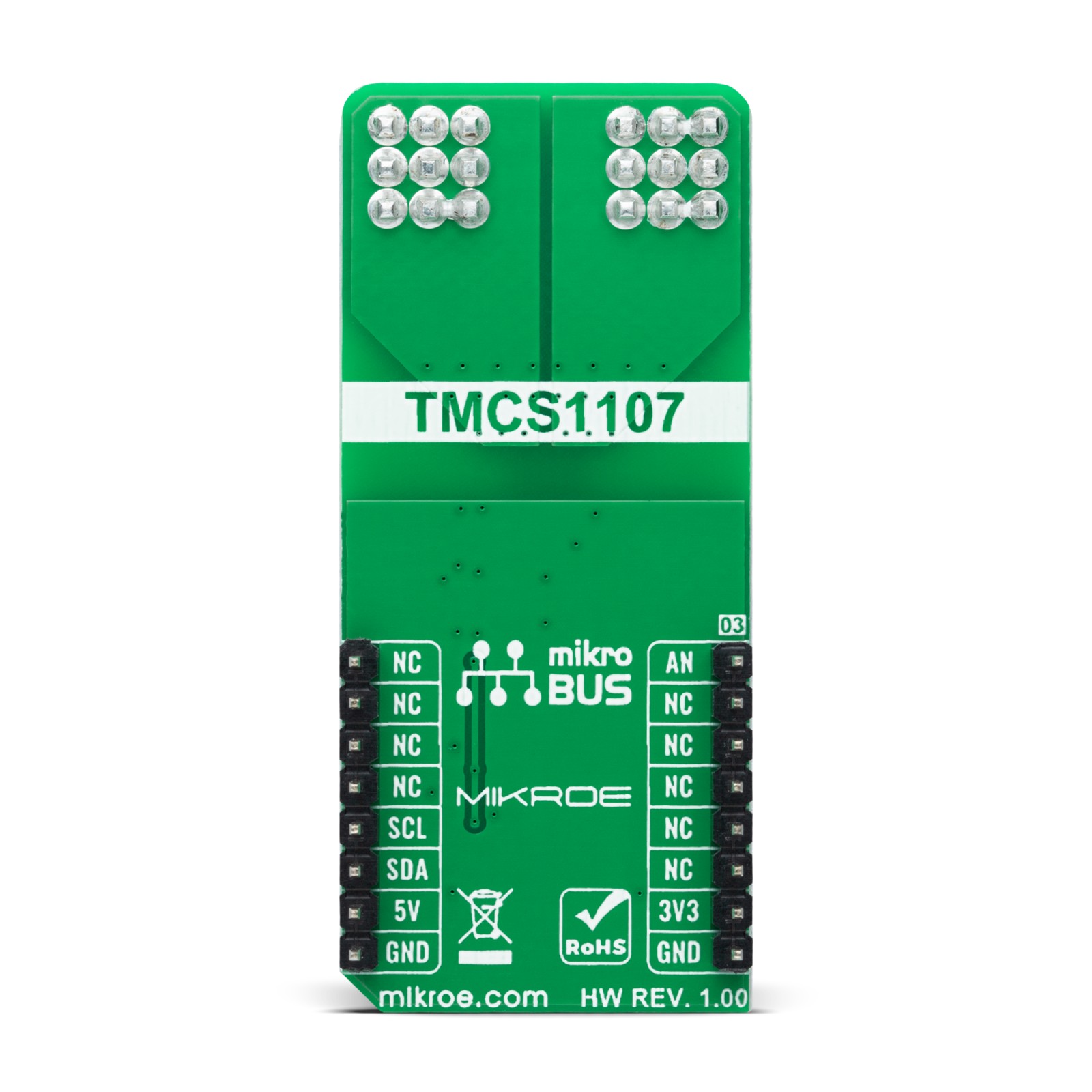
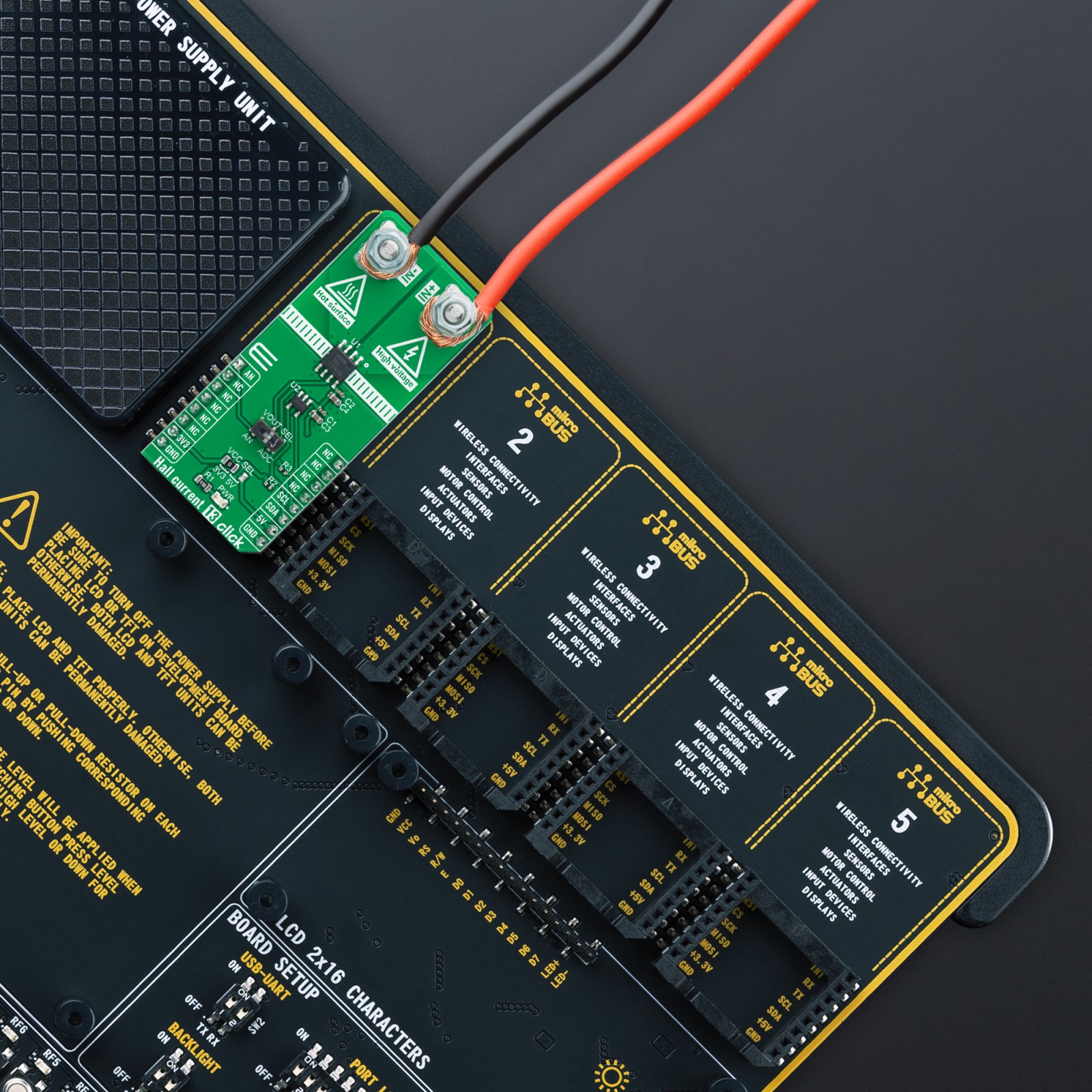
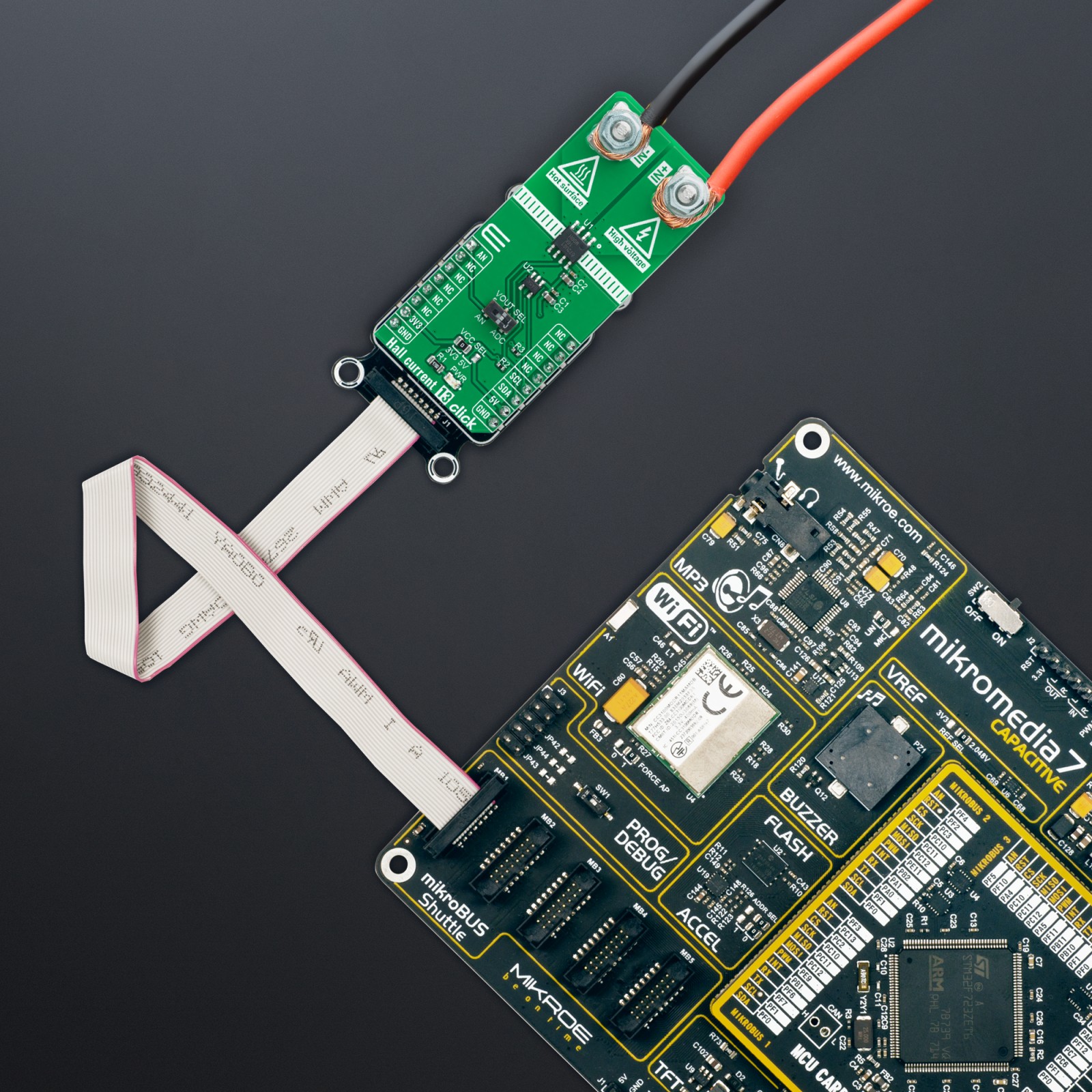
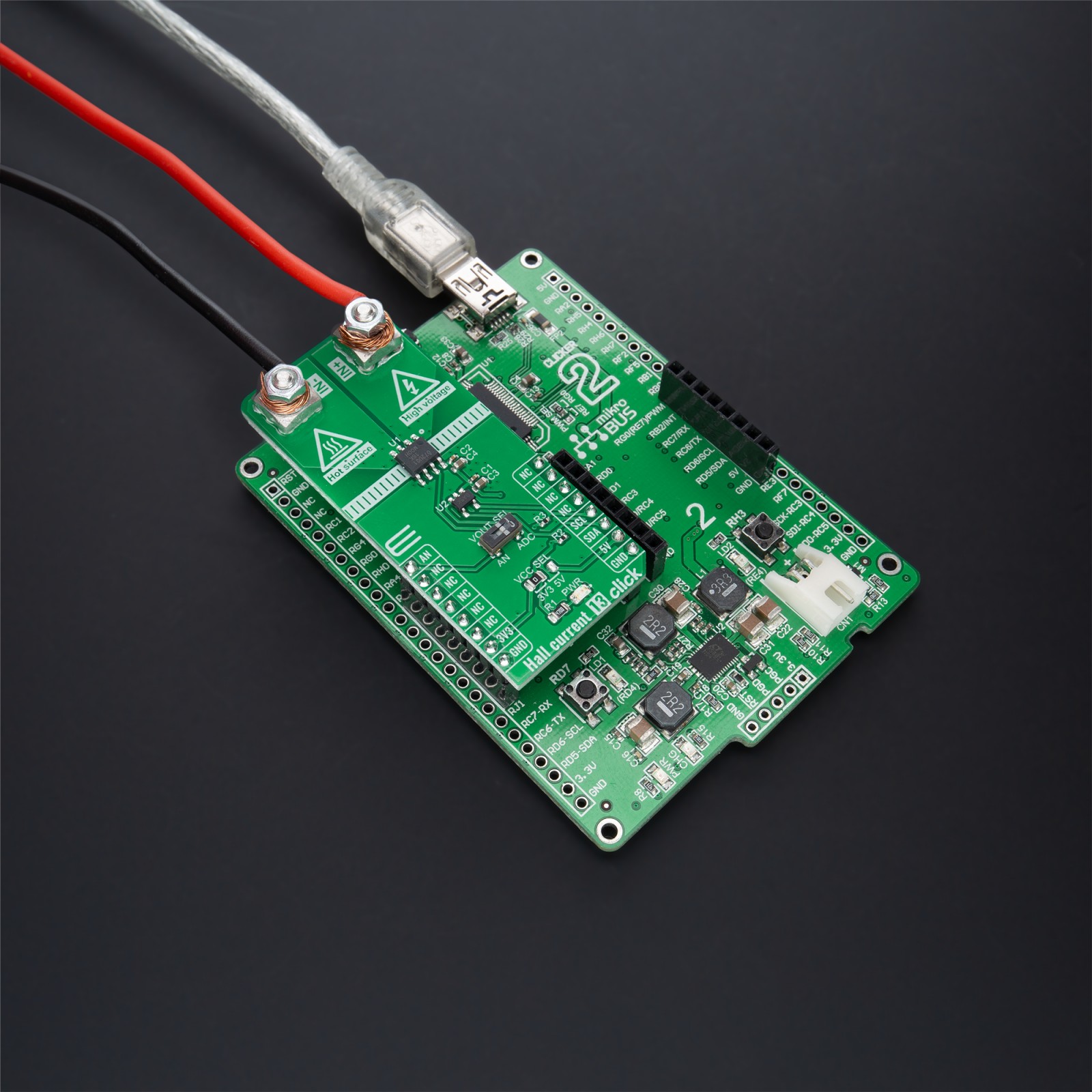
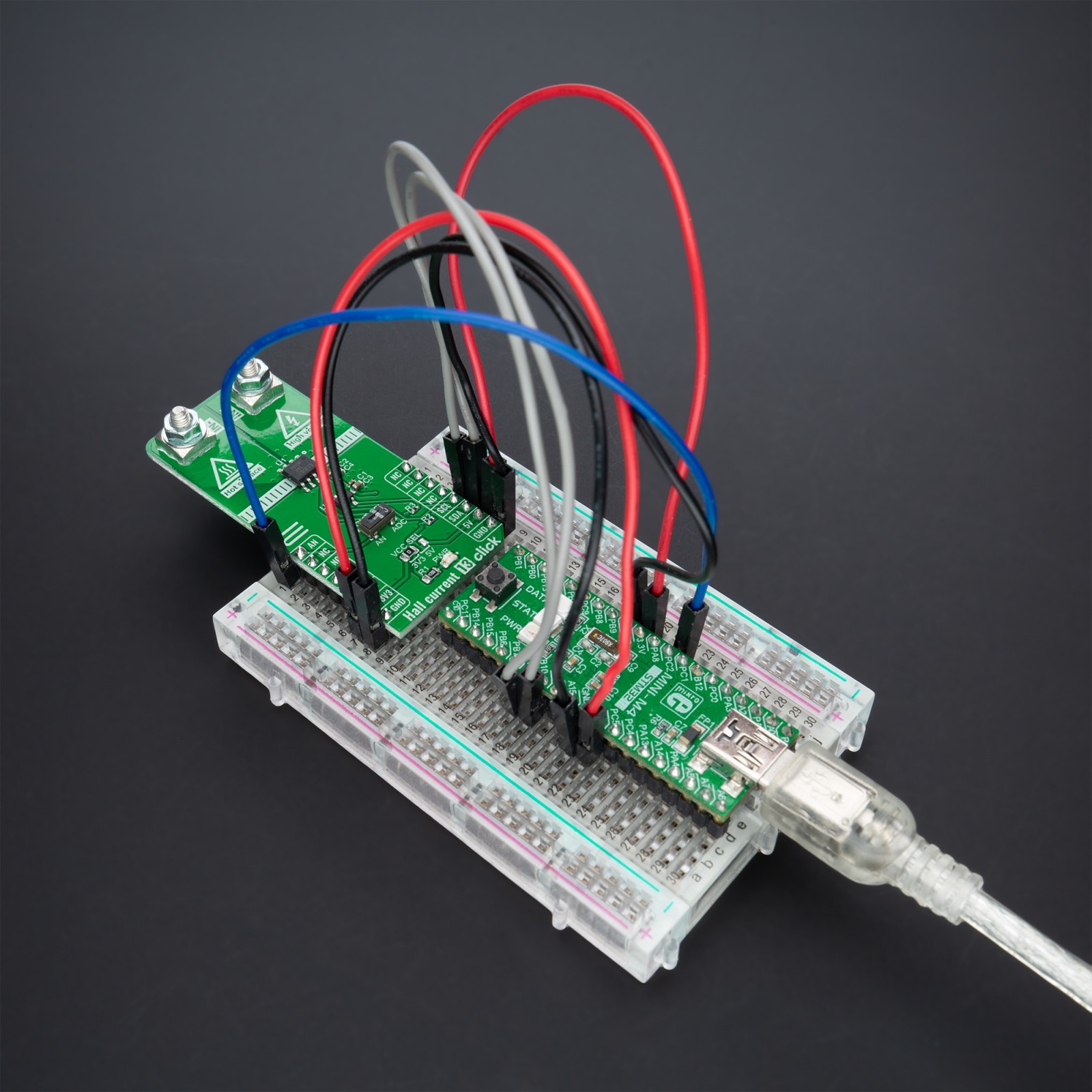
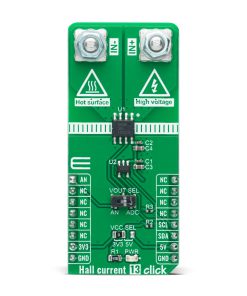
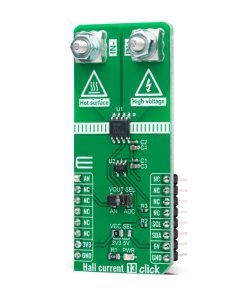
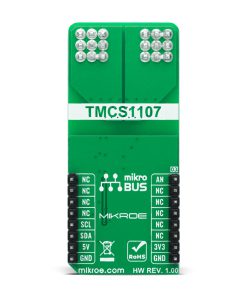
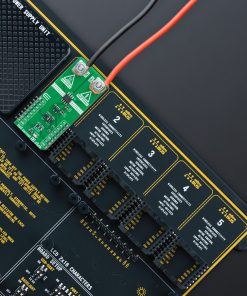
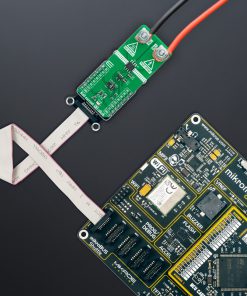
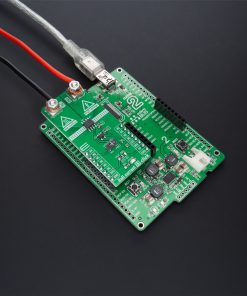
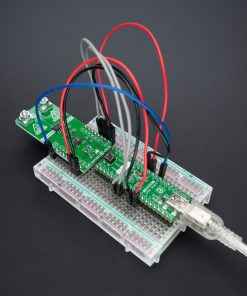
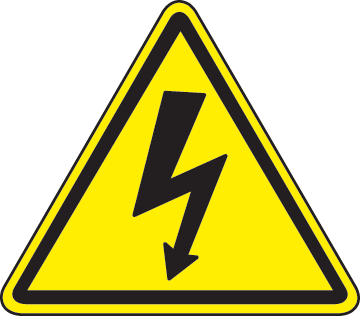 DO NOT TOUCH THE BOARD WHILE THE EXTERNAL POWER SUPPLY IS ON!
DO NOT TOUCH THE BOARD WHILE THE EXTERNAL POWER SUPPLY IS ON!








